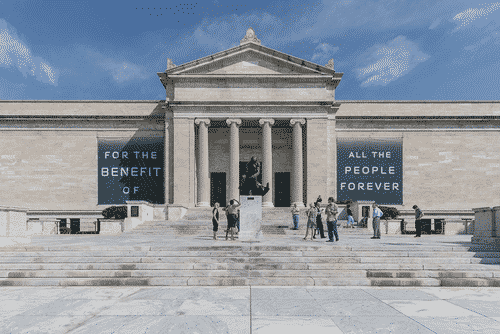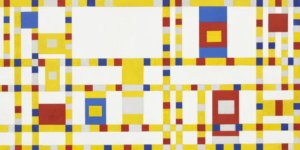In February 2020, the Smithsonian launched an unprecedented 2.8 million digital items into the public domain, allowing anyone to reuse and share the assets without needing to ask for permission. The Smithsonian Open Access offers people the opportunity to explore millions of 2D and 3D images and data, including still images, text, audio recordings, and more. Because they’re free of copyright restrictions, anyone can use them for any purpose free of charge.
The Smithsonian calls the designation Creative Commons Zero (CC0), using CC0 to let people know that the digital asset’s copyright has been waived and that they don’t need the museum’s permission to download, use, and share the items. Creative Commons Zero (CC0) is the non-profit that is dedicated to making knowledge, creativity, and culture accessible across the globe. The CC0 provides licenses that give museums and other organizations public domain tools and a standard to grant copyright permissions.
But what is the “public domain” exactly? And how does it align with the social-share and free-culture movement which promotes the freedom to share creative works openly and freely without the burden of licenses and fees?
The Public Domain Defined
When a piece of creative work is no longer protected by copyright, it’s considered “public domain” art. Artists can lose copyright protection or the right to profit from a piece of art by surrendering or transferring it. Alternatively, copyright owners can “dedicate” or deliberately place work in the public domain. Copyright can also expire or be taken away due to ineligibility. In the US and in countries of the European Union, copyright protection lasts the lifetime of the artist plus 70 years after their death. So once artwork no longer has copyright protection and is “in the public domain,” those who access it can use it freely without having to seek permission from the artist or last owner.
However, because of a law passed in 1998 called the Copyright Term Extension Act (CTEA), aka Sonny Bono Act and Mickey Mouse Protection Act, works made in 1923 and onwards would still have copyright protection and would not be allowed to enter the public domain until twenty years later on January 1st, 2019. This explains why at midnight on the eve of New Year’s, the mass expiration of copyright led to a deluge of creative works into the public domain – including paintings, photos, films, poems, books, and musical compositions. The massive drop into the public domain included works like Our American Adventure by Arthur Conan Doyle and Stopping by Woods on a Snowy Evening by Robert Frost.

The Public Domain Art Movement
The Smithsonian’s impressive public domain art launch isn’t the first time a prominent museum has given the public unrestricted access to their art collection and adopted the CC0 license for their public-domain works. One of the pioneers of the public domain art movement is The Walters Art Museum. In 2007, the Baltimore-based museum started uploading images online, allowing users to download works from their collection. The organization believed that their digital images “extend the reach of the museum” and chose to make “digital images of artworks believed to be in the public domain available for use without limitation, rights- and royalty-free.”
And by 2011, a grant from the National Endowment for the Arts allowed The Walters Art Museum to upgrade their website and digitize about a third of their entire collection. The website presented over 10,000 artworks to the public to view and download for free without copyright restriction. Taking inspiration from The Walters Art Museum, the Getty Museum’s Open Content project made 4,600 high-resolution images accessible for use to the public for free in 2013. The public domain works are for both commercial and non-commercial purposes as long as the user attributes the museum properly. The impressive collection released into the public domain include works by van Gogh, Monet, da Vinci, and Rembrandt.

In 2014, the Metropolitan Museum of Art joined a growing number of museums that made their works available on the public domain for free. The initiative is called Open Access for Scholarly Content (OASC) and allows the public to directly download over 400,000 high-resolution digital works from the Met’s encyclopedic collection.
By 2017, the Met had more than 375,000 public-domain images. The organization also adopted a new policy called Open Access that allowed the public to use the artworks for both scholarly and commercial use. Open Access also uses the CC0 designation, making the images freely available and with no restrictions.
The Met’s Director and CEO Thomas P. Campbell emphasized at that time: “Our comprehensive and diverse museum collection spans 5,000 years of world culture and our core mission is to be open and accessible for all who wish to study and enjoy the works of art in our care. Increasing access to the Museum’s collection and scholarship serves the interests and needs of our 21st-century audiences by offering new resources for creativity, knowledge, and ideas.”
The CEO of Creative Commons Ryan Merkley described the Met’s move as “a profound gift in service of its mission: the largest encyclopedic art museum in North America has eliminated the barriers that would otherwise prohibit access to its content, and invited the world to use, remix, and share their public-domain collections widely and without restriction.”
A Culture Promoting Accessibility and Creativity
“Imitation is not just the sincerest form of flattery – it’s the sincerest form of learning.” ― George Bernard Shaw
Creative Commons aligns with the free-culture movement, the social movement against overly repressive laws that prevent innovation and imagination and an ethos that embraces the public domain.
With museums committed to making their collections accessible to the public and the promotion of knowledge, the digital age offers art institutions the opportunity to reproduce works in formats in an ethical manner. And thanks to international non-profits like CC0 on a mission to promote accessibility and innovation in the art world, there’s a standardized designation that tells the public the creative works are free to use for whatever purpose. With public-domain art with CC0 designation, teachers and scholars can freely quote passages and artists can download and rework content without paying licensing fees.
In 2019, the Cleveland Museum of Art (CMA) joins the growing number of museums opening their collections to the public. Through its Open Access program, practically half of the CMA’s entire collection was digitized and made available to the public. This not only involved 30,000 works but also includes metadata for over 61,000 works. This move aligns with its mission to “create transformative experiences through art, for the benefit of all the people forever.”


![[Left] Kusama with her piece Dots Obsession, 2012, via AWARE, [Right] Yayoi Kusama (Courtesy Whitney Museum of American Art) | Source: thecollector.com](https://www.artdex.com/wp-content/uploads/2024/04/Left-Kusama-with-her-piece-Dots-Obsession-2012-via-AWARE-Right-Yayoi-Kusama-Courtesy-Whitney-Museum-of-American-Art-Source-thecollector.com--300x172.png)




